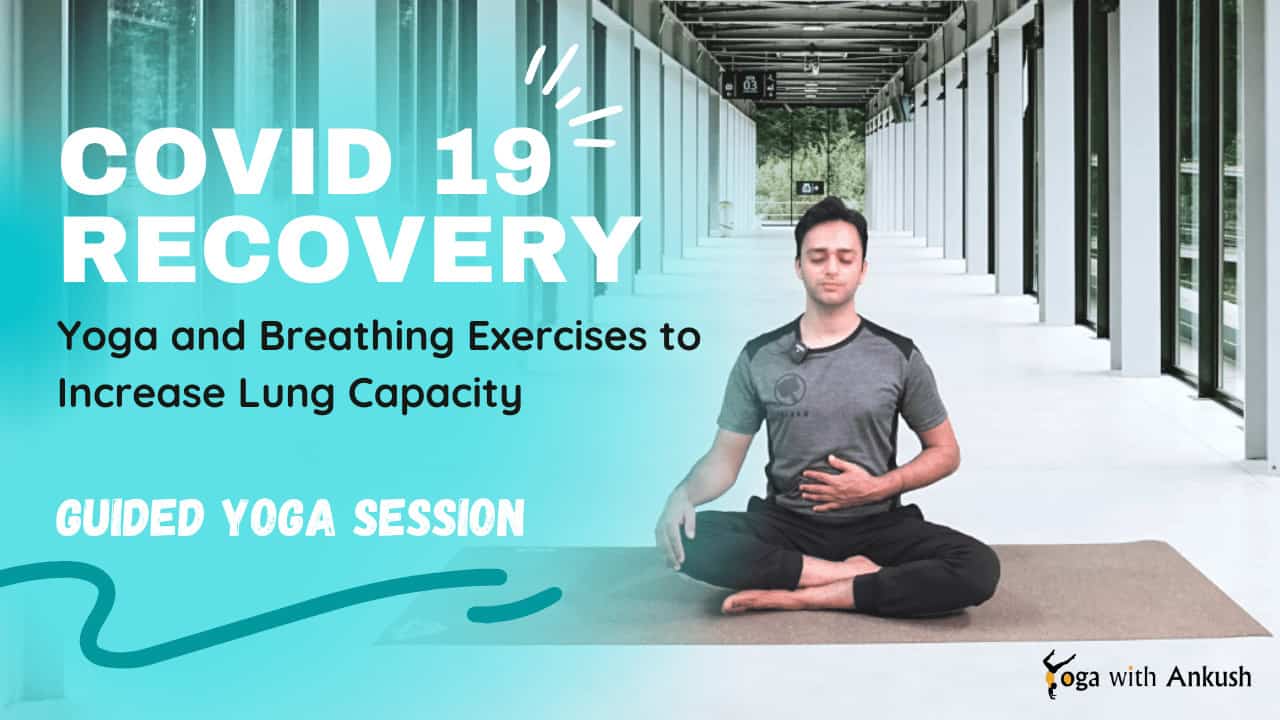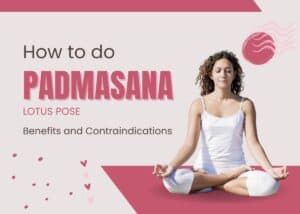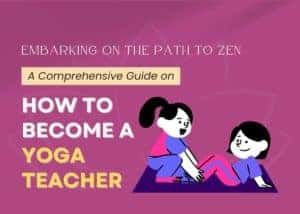Yoga and Breathing Exercises to help in COVID recovery – Yoga for Covid Recovery
I hope you are doing well and taking all the required precautions to keep yourself safe from the pandemic (COVID).
Many people in my social circle asked me about yoga practices that can help them build stronger immunity and also help them or people they know to help in COVID recovery.
Table of Contents
Keeping this in mind, I thought of creating a guided yoga session for yoga and breathing exercises to help in COVID recopvery that you can follow along and practice asanas (postures) and pranayama (breathing exercises) with me.
These asanas will not only help in COVID recovery but would also increase your immunity at the same time.
Every asana and pranayama has a positive effect on your health and stress levels, however, I have shortlisted few of them that you can start practicing (these are more focused towards increasing your lung capacity and help in COVID recovery), you don’t have to practice any asana that makes you too uncomfortable, start with the ones that you are comfortable with and let your body adapt and get ready for the complicated ones with time.
If you want to jump straight away to the video, please scroll down to the end of this post or else keep reading 🙂
Important: Yoga is about uniting your mind with your body and the key to this union is your breath, when you align your breath with your movements it would help you get the maximum benefit of the posture.
Please keep in mind that it is perfectly fine to not go deep into the posture until your body is ready to do so, this takes time and practice and that is why it is important to listen to your body, respect it’s limitation and slowly work on them. Do not try to compete with your counterparts or anyone else, that is not the goal. The goal is to live a healthy and stress free life.
Disclaimer: These asanas and breathing exercises will aid in the recovery from COVID however they should not be practiced as an alternative to professional treatment and medication.
Yoga Asanas to help in COVID recovery and increase lung capacity
1. Marjariasana or Cat and Cow Pose
A very good pose for relaxing the spine and making it flexible. Helpful in backaches, exercising lungs and improving posture. Massages abdominal organs and hence improves digestion.
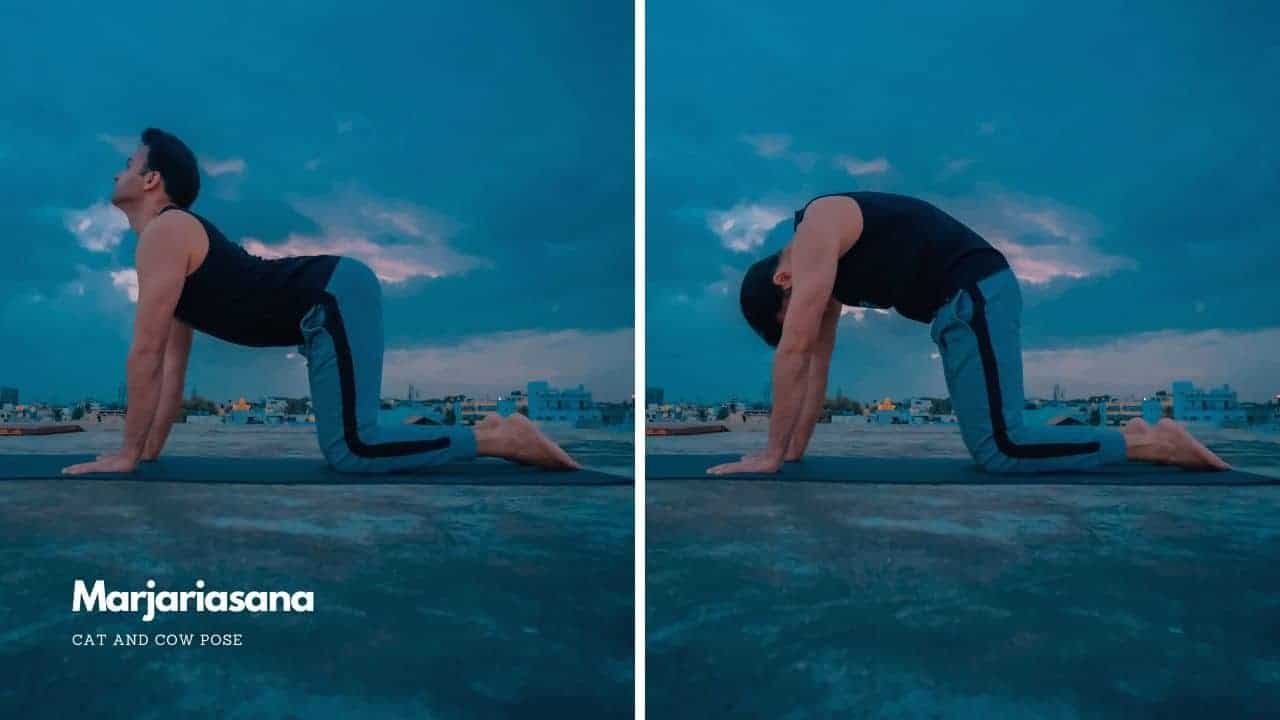
How to do Marjariasana or Cat and Cow Pose
- Come to table top position. Knees on the mat, knees hip width apart, palms right below the shoulders.
- Take a long inhalation and arch your back aligning it with the inhalation.
- Exhale slowly and hunch your back.
- Do not move your knees, hips or arms, only focus on moving your spine.
- Repeat for 8-10 breaths.
- Exhale and relax in child’s pose.
2. Bhujangasana or Cobra Pose
Relieves backache, keeps spine healthy, beneficial for abdominal organs like liver and kidneys. Helps in menstrual and gynecological disorders. Eases constipation, good for stimulating the appetite. Opens of your chest as well (good for COVID recovery) as heart and is helpful for people suffering from depression.
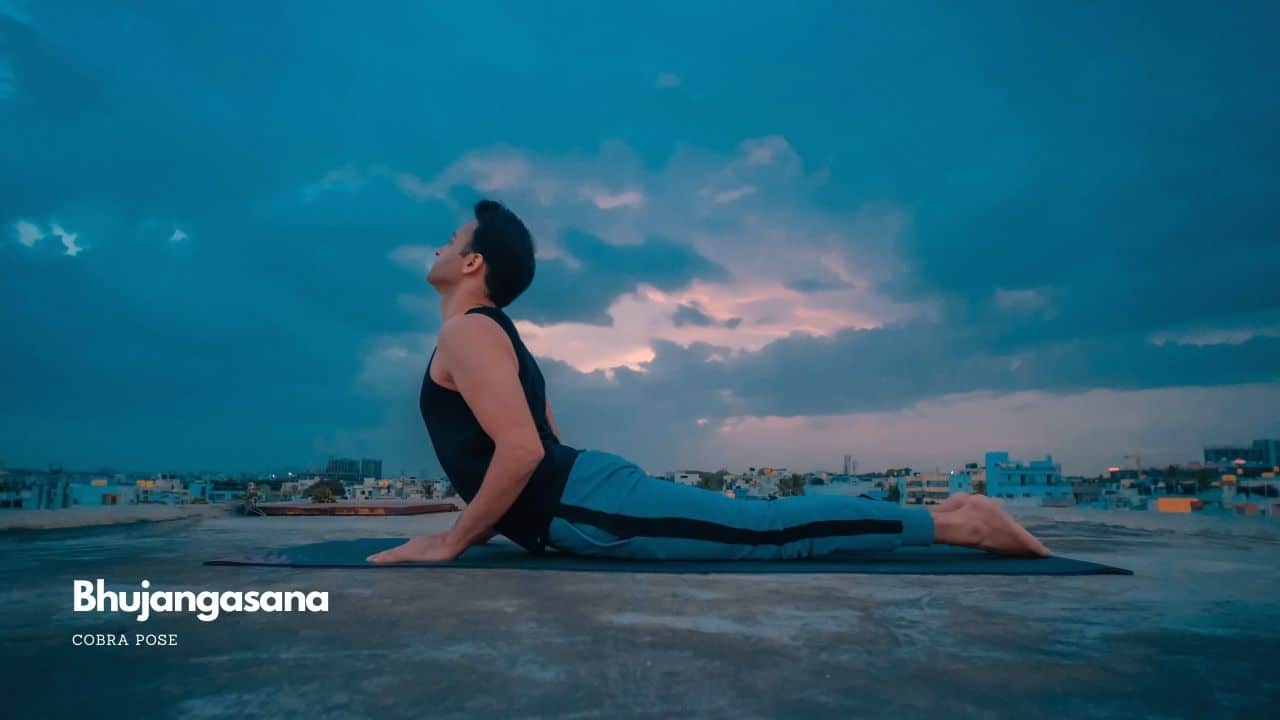
How to do Bhujangasana or Cobra pose
- Lie down flat on your stomach with your head on the floor, legs straight and feet together.
- Keep your palms on the floor under your shoulders and your elbows close to the body.
- Relax your body and lower back.
- With inhalation slowly raise your head and start lifting your chest up, keeping your chest open, use your back muscles for the lift and put less pressure on the hands.
- Keep your pubic bone in contact with the floor, the naval can be raised a little bit.
- You can keep your elbows a little bent and once you reach a comfortable height, look diagonally.
- Stay for 5-8 breaths
- To return, exhale and slowly bend the arms, lower the naval, chest, shoulders and forehead to the ground.
- Relax!
3. Ustrasana or the Camel Pose
An intermediate level posture, this pose helps in strengthening the back, uplifts mood, improves digestion. Ustrasana also opens up your heart chakra and expands your chest and exercises your lungs which is good for COVID recovery.
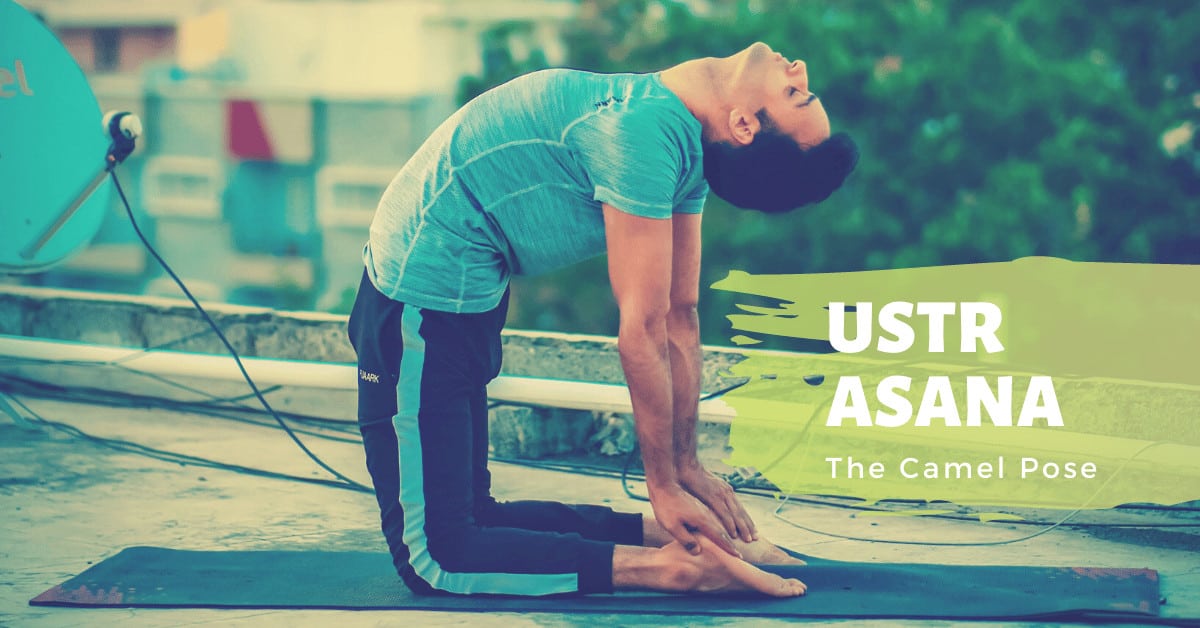
How to do Ustrasana (Camel Pose)
- Sit comfortably in Vajrasana
- Slowly stand on your knees, in case your knees hurt, you can fold your yoga mat or place a thin layer of blanket under your knees.
- Keep your arms on the sides.
- Keep your knees and feet together or separated if it is more comfortable (not wider than your hips).
- Keep your feet stretched outwards.
- With inhalation slowly lean backward and while pushing your pelvic region forward keep your right hand on your right heel and left hand on your left heel. (You can keep a bolster close the heals on the legs horizontally, if you can reach them)
- Keep pushing your hips forward and your thighs vertical.
- Bend your spine, neck and head backwards as far as it is comfortable.
- The arms should support your shoulders and distribute your weight evenly between knees, legs, feet and back.
- Remain in this position for 5 – 8 natural breaths. You can increase the duration to 3 minutes with practice.
- To come out of the posture, exhale slowly and release your arms one at a time and come back to kneeling position.
- You can relax in Vajrasana or Child’s Pose (Balasana)
4. Matsyasana or Fish Pose
Matsyasana is good for throat, pituitary, thyroid and pineal glands, it stretches your chest and neck, beneficial for respiratory disorders and relieving stress from neck and shoulders.
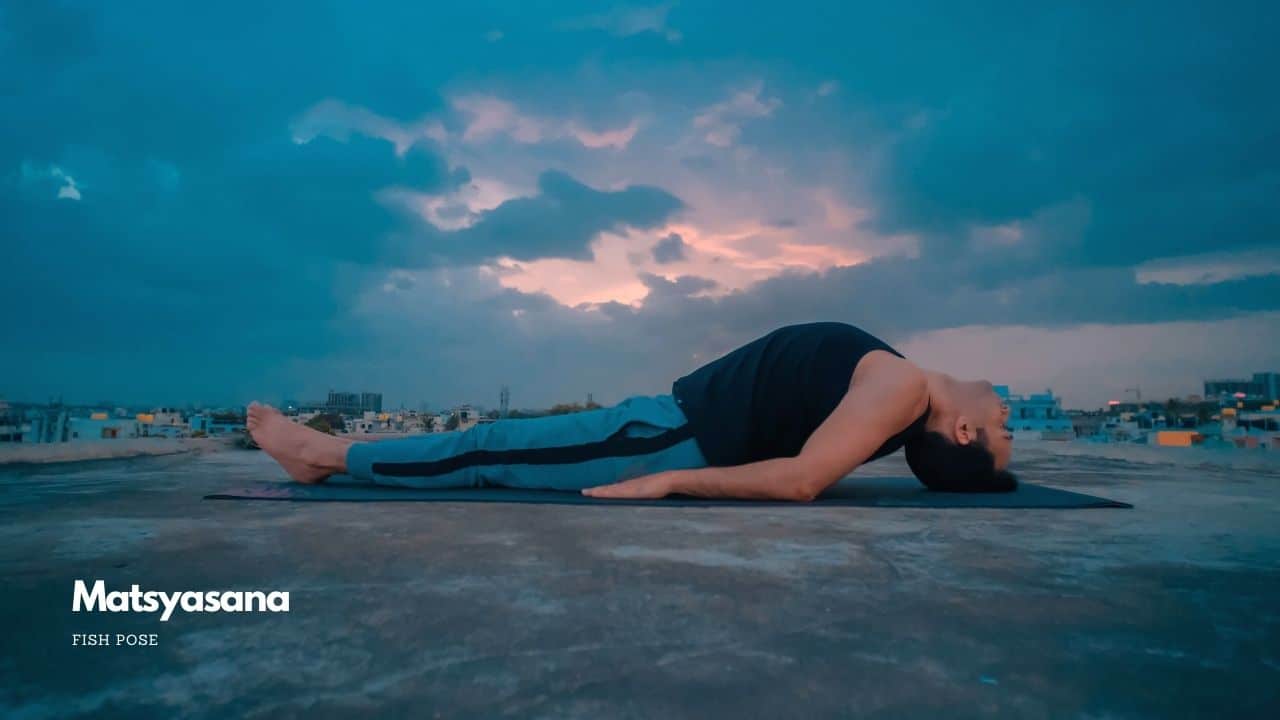
How to do Matsyasana or Fish Pose
- Sit with your legs stretched (you can also do this pose with padmasana / lotus pose)
- Keep your elbows on the mat and with inhalation expand your chest.
- As you exhale, move the crown of your head towards the floor and slowly keep it on the floor.
- If you are not able to place the crown of your head on the floor, slightly adjust your elbows by moving them forward towards the legs.
- You can also keep your hands below the hips or besides your waist.
- Hold the pose for 5-8 breaths and take long inhalations to expand your chest and exhale slowly through your mouth.
- Once you are done, lift your head a little and keep the back of the head on the mat while lying down flat on your back.
5. Pawanmuktasana or Wind Relieving Pose
Massages your abdominal organs, relieves constipation and aids in digestion, good for weight loss. Also good for releasing tension from back.
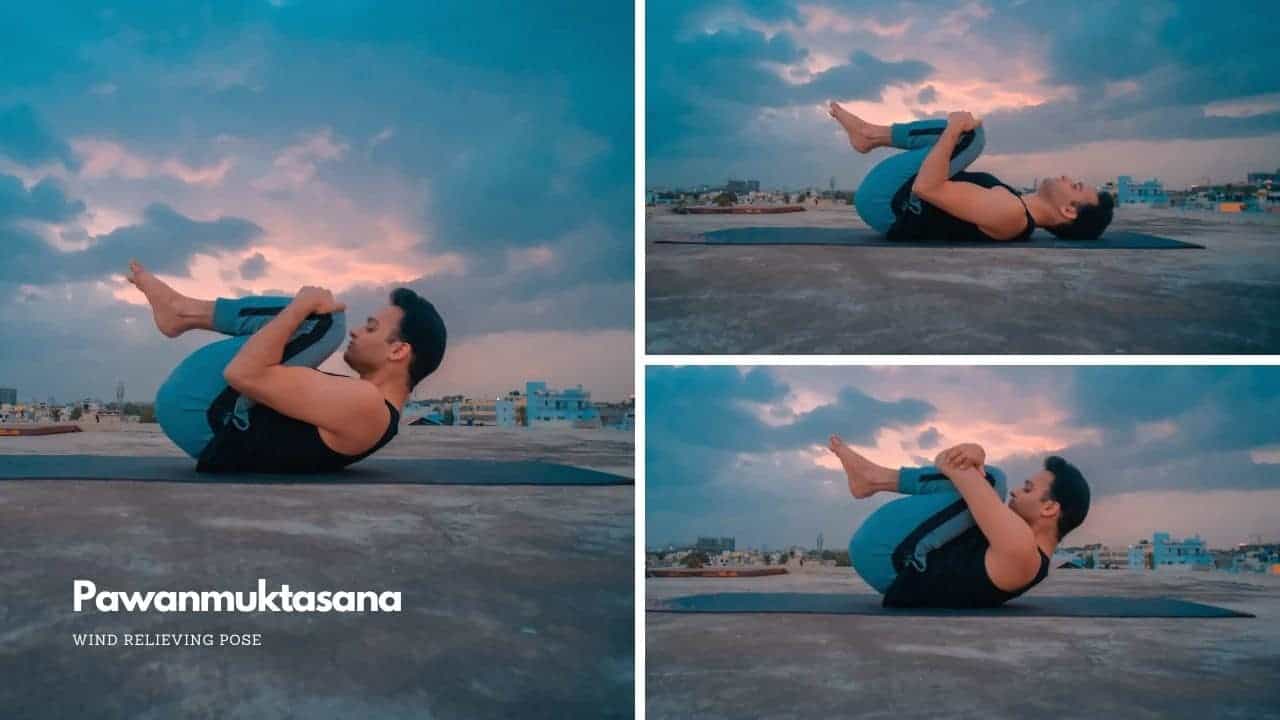
How to do Pawanmuktasana or Wind Relieving Pose
- Lie down flat on your back.
- With exhalation bend your knees and bring them close to your chest.
- Hold your knees with your hands or wrap your hands around the knees.
- Keep pressing your knees towards your chest and thighs on your belly.
- If you are comfortable, lift your head and take it closer to your knees.
- Keep breathing mindfully and hold the pose for 5-8 breaths.
- With inhalation slowly stretch your legs and keep your head and legs on the mat and relax.
Pranayama or Breathing Exercise to increase lung capacity and aid COVID recovery
1. Abdomen / Belly / Diaphragmatic Breathing
Diaphragm, a dome shaped sheet of muscle at the bottom of your rib cage is responsible for respiratory function, abdomen breathing technique helps in engaging the diaphragm by moving it upwards and downwards.
How to do Abdomen Breathing
- Sit in a comfortable position with your back straight.
- Keep your right or left hand on the belly.
- Slowly inhale through your nose smoothly and as long as you can.
- The inhaled air should expand your belly naturally that you can feel with the hand that’s on it, do not forcibly expand the belly.
- Exhale slowly and as long as you can through your mouth and feel your belly going inwards.
- You can start with 8-10 breaths and increase the time to 5-10 minutes.
2. Thoracic/Chest Breathing
Another breathing exercise to increase your lung capacity is thoracic breathing. In chest or thoracic breathing you breathe using the top lobes of your lung
How to do Thoracic/Chest Breathing
- Sit in a comfortable position with your back straight.
- Keep your right or left hand on the chest.
- Slowly inhale through your nose smoothly and as long as you can.
- The inhaled air should expand your chest naturally that you can feel with the hand that’s on it, do not forcibly expand the chest.
- Exhale slowly and as long as you can through your mouth and feel your chest contract.
- You can start with 8-10 breaths and increase the time to 5-10 minutes.
For more breathing exercises and guided yoga session please watch the video below:-
Video on Yoga and Breathing Exercises to help in COVID recovery – Yoga for Covid Recovery
I hope you found this post useful, if you have any questions or feedback, please do mention in the comment section below. 🙂
Stay safe and stay happy
Namaste!
Also Read:
